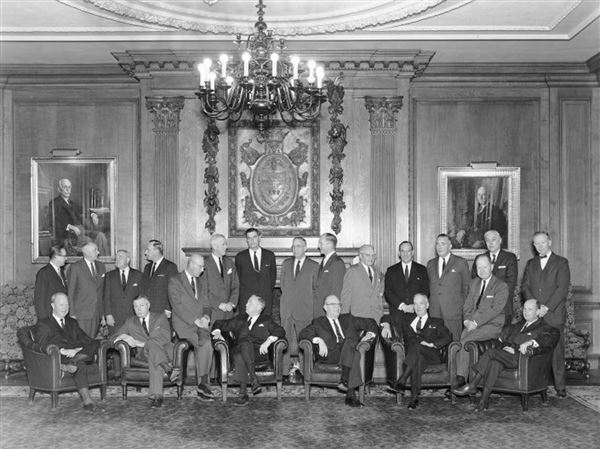"Titanic: The Artifact Exhibition" takes visitors on a vivid journey through one of history's most tragic chapters -- the sinking of RMS Titanic, which struck an iceberg in the Atlantic Ocean on April 15, 1912.
The traveling exhibition opens Saturday at Carnegie Science Center's SportsWorks.
"Titanic" was produced by RMS Titanic Inc., which is the only company legally allowed to recover items from the Titanic wreck, and its parent company, Premier Exhibitions. Premier also produced the controversial "Bodies: The Exhibition," which closed last month at the Science Center.
RMS Titanic Inc. has conducted seven recovery expeditions, starting in 1987, bringing back more than 5,500 items -- from sections of the ship to china, glassware and passengers' personal effects. The last recovery mission was in 2004. The exhibit includes more than 260 artifacts from these missions.
"We can tell the story of Titanic through these priceless artifacts, so that the people come alive, the ship comes alive, the voyage comes alive as you're looking at these magnificent artifacts," says Cheryl Mure, director of education for Premier Exhibitions.
- Where: Carnegie Science Center, North Side.
- When: Saturday through Sept. 1.
- Tickets: Admission is separate from regular Science Center admission and will be timed. $20 for nonmembers and $15 for children 3-13, discounts for Carnegie Museum members.
- Information: 412-237-3400.
All of the artifacts were recovered from the ocean floor surrounding the wreck. RMS Titanic is authorized to recover anything from the debris field for conservation. Items still on board can be photographed or videotaped but not removed.
Unlike many of the Science Center exhibits, which are interactive in nature, this is a more traditional museum walk-through exhibit, with plenty of text and explanation in addition to the displays. The lighting is subdued, because the artifacts must be kept in temperature- and light-controlled environments.
At the exhibit entrance, visitors are given a replica boarding pass to a journey that will take them through the ill-fated ship's short life -- its construction, what life on board was like, a timeline of the shipwreck, its survivors and victims, and ongoing recovery efforts.
Many of the recovered items are in very good condition, such as a collection of au gratin dishes found unbroken and still neatly stacked on the ocean floor, crystal and glass, and corked bottles with liquid still inside.
Some paper items that were protected by leather suitcases or wallets also survived. "The tanning process in the early 1900s was such that the microorganisms on the bottom of the ocean could not eat through the leather," Mure says. "Any time we found leather, we knew we'd find a treasure trove of artifacts."
One section displays two replicas of cabins, which are a study in contrasts: one a nicely appointed first class cabin with private bath, next to a cramped third class cabin with four bunks. Another section is a replica of the ship's elegant Verandah Cafe and Palm Court.
Visitors can touch a giant slab of ice to experience how cold the waters were.
The exhibit comes to the Science Center in part because of its heavy focus on science -- exploring the engineering and design of the ship, and preservation efforts behind salvage and recovery missions, which involve teams of underwater archaeologists, metal and textile experts, conservators and historians.
Once items are brought to the surface, Mure says, they're cataloged and then placed back in the same environment in which they were found -- salt water and darkness -- and shipped to the conservation lab. Electrolysis and chemical baths are used to remove corrosive minerals and preserve the items for display.
But ultimately, "Titanic" is about its human stories -- its 705 survivors and the 1,523 who lost their lives. Researchers have unearthed a lot of detail about the people who were aboard, along with some of their possessions -- eyeglasses, jewelry and other personal effects.
A portion tells the stories of Titanic passengers with local connections: Two Pittsburgh natives, Claire Karnes and Mary Corey, who were among those lost, and a young couple from Finland who were headed for a new life in Monessen. She survived; he didn't.
The Science Center is looking for local people who have a connection to Titanic or its passengers. Stories can be e-mailed to: titanic@carnegiesciencecenter.org.
"We hope people will never forget the story of Titanic," Mure says. "One of our main goals is to keep the story alive in people's minds for generations to come."
The exhibit is also designed as a field trip and educational tool for schools, Mure says. Teachers can download free course materials from the Titanic Inc. Web site: www.titanic-online.com.
First Published: May 22, 2008, 8:00 a.m.















